Wells with spring water are sometimes the only source of water supply in a personal plot. As a rule, they are constructed from concrete rings of different diameters. But there is one important point, missing which you can face a number of troubles. Through the joints that are formed at the seams of reinforced concrete elements, groundwater can seep, which is far from drinking norms.
In this case, the waterproofing of the wells, which is a protective layer that seals the seams and prolongs the life of the well itself, will help prevent undesirable consequences, as it preserves the internal reinforcement of the rings from destruction.
Why take protective measures?
As mentioned earlier, concrete wells are vulnerable to leaks and groundwater seepage at the seams that connect the rings. Another weak link in reinforced concrete structures is the junction of communications with the lower segment of the structure. This process occurs due to the porous structure of the material from which the well elements are poured.
Moisture accumulates in micropores and starts the process of destruction of the material, which is accompanied by the appearance of fungi and mold organisms that multiply in wet soils. All this affects the quality of drinking water. It becomes cloudy and acquires a rotten aftertaste. Along with groundwater, mud and sand pass through the pores.
Types of insulation materials
There are special materials that are used to process wells from the outside and from the inside. If you decide to do all the work yourself, it would be useful to collect as much useful information as possible about the processing technology and the means used in the waterproofing process.
This type of material is sprayed onto the outside of the rings. The composition is sprayed using special equipment with nozzles, which makes it possible to process all hard-to-reach places. The reinforced structure of concrete and the joints of the seams become inaccessible to the penetration of impurities and dirty water.
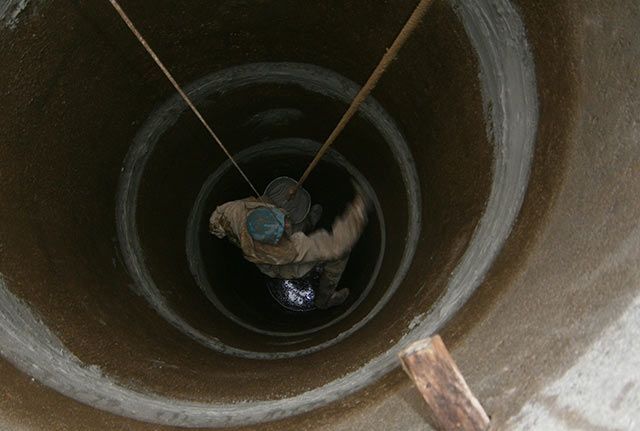
Two-component formulations are completely safe for health, so no additional protective measures are required when working with them. They are made from non-toxic, environmentally friendly components, which is important in this field of application.
Very reliable means that can be used in all climatic zones without exception.
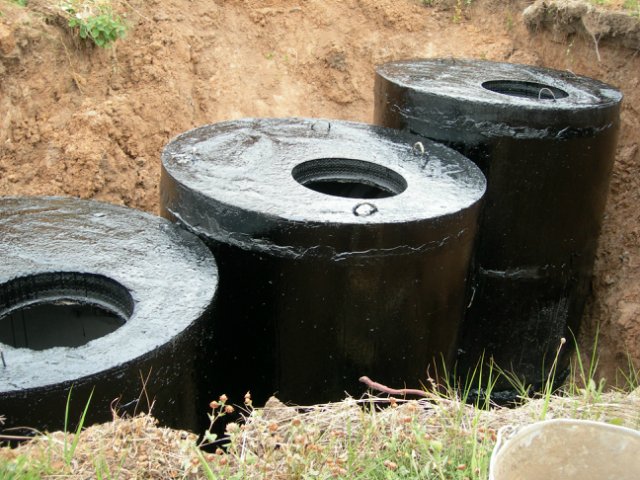
Mastics with bitumen, which formed an elastic layer after application, are not afraid of sudden changes in temperature and perfectly withstand the pressure of groundwater on the surface of reinforced concrete walls and at the joints.
This category includes various types of products that reliably protect concrete rings from moisture. The calculation of mixtures for such coatings is carried out according to the manufacturer's instructions, and they are applied to the processing sites with a spatula.
The composition of the products may vary (depending on the manufacturer and brand), but they are all absolutely safe for humans and the environment.
For the application of such insulation, additional preparation of the walls and seams of the well is not required.
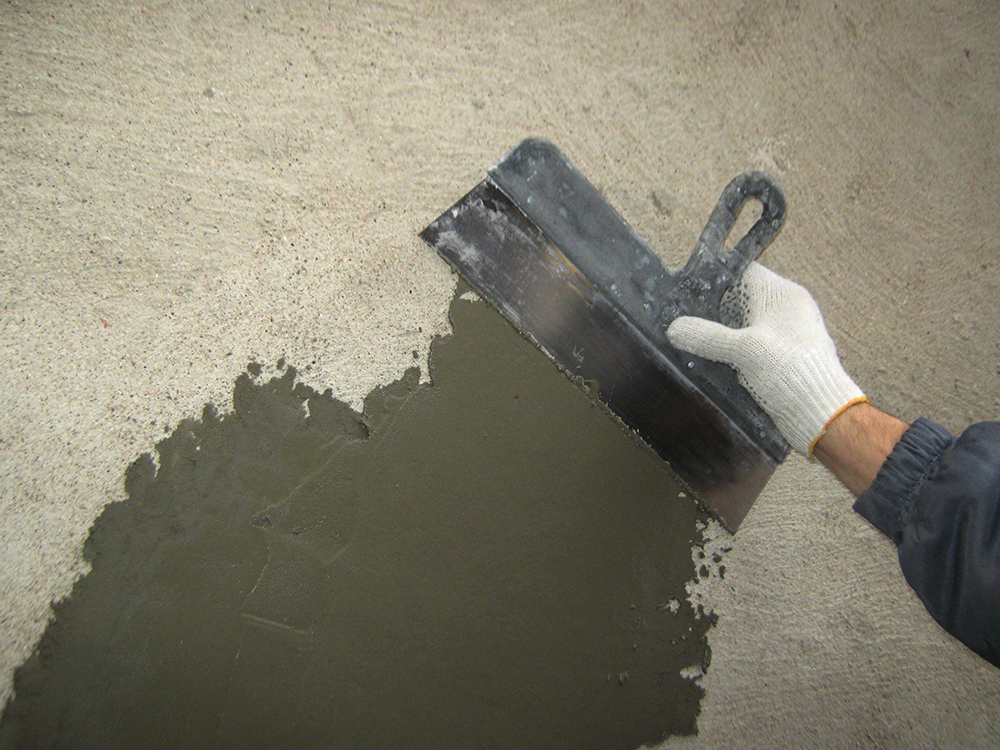
It dries very quickly and creates a stable film that resists moisture penetration and other external factors. The indisputable advantage of the coating agent is its low cost.
This type of insulation is used for outdoor work and protects the outer walls of concrete wells from groundwater seepage. The processing of well structures is carried out using PVC films and other similar roll materials with bitumen at the base.
Waterproofing materials for protecting concrete wells from moisture and dirt are durable and can last from 10 to 50 years (depending on the type and manufacturer) without additional processing.
Insulation process
Waterproofing structures made of concrete rings consists not only of processing the seams, but also provides for reliable protection of the entire surface. The whole process consists of several stages and is carried out strictly according to technology.
Tools
To carry out the work you will need the following tools and fixtures:
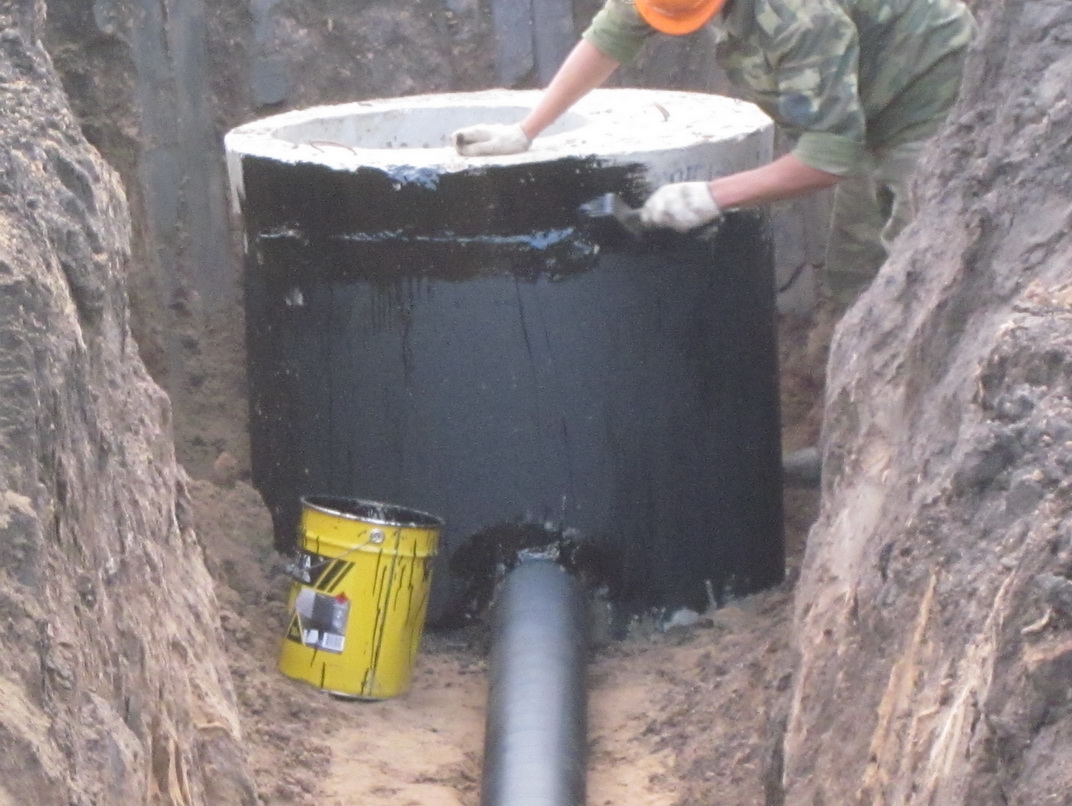
- flashlight;
- wall chaser;
- metal brush;
- putty knife;
- brush for liquid formulations;
- sprayer (for some materials).
At the very beginning of work, it is necessary to deepen the seams with a wall chaser. To do this, U-shaped cuts are made with a cross section of 2.5x2.5 cm. With their help, the contact area of the sealants and the treated surfaces is increased. In the same way, the place of the junction of communications (if they are provided) is ditched.
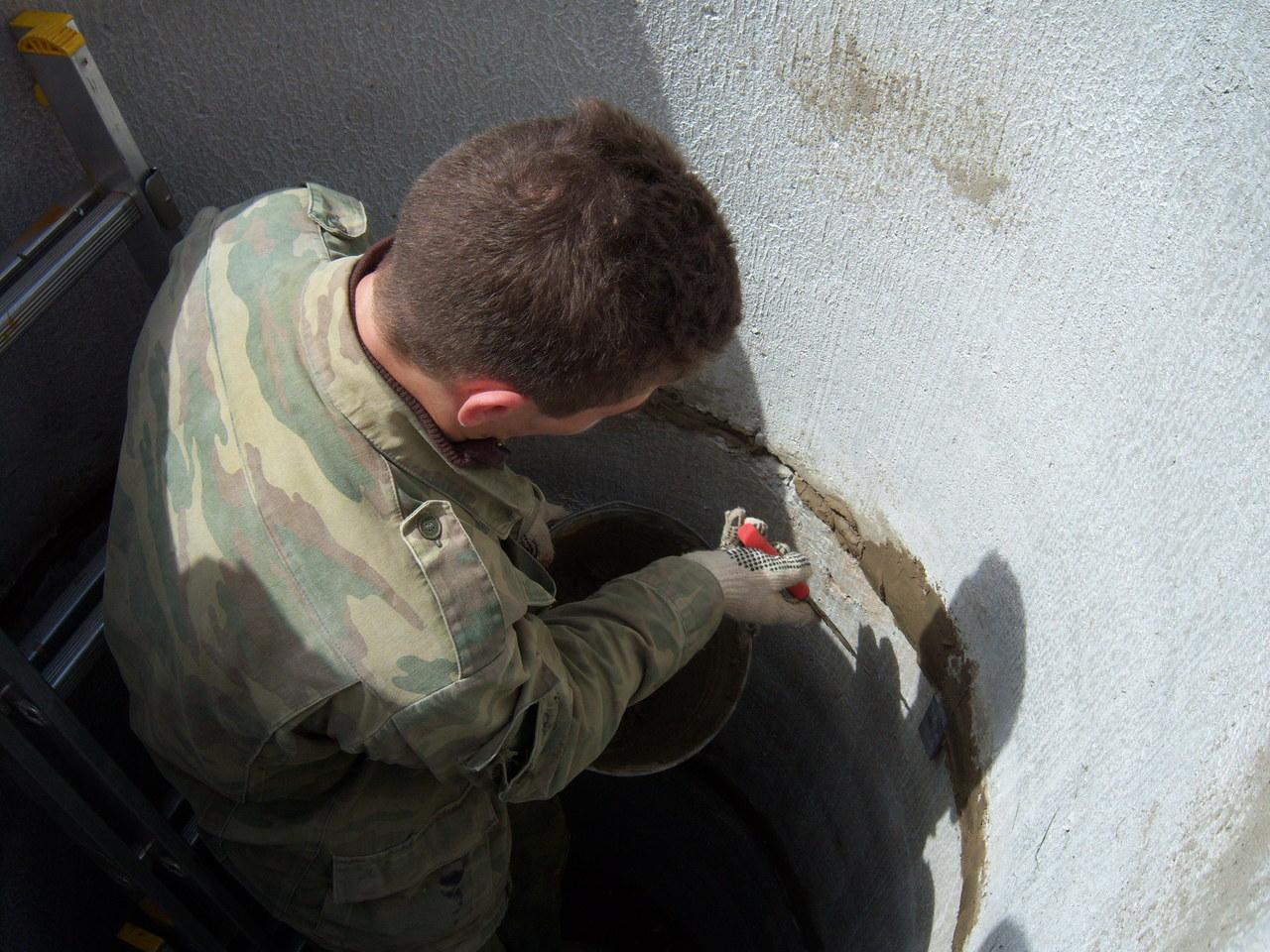
After clearing the necessary areas with a metal brush, the well rings are carefully cleaned of dirt and dust that appeared due to the deepening of the seams. At the end of the preparatory stage, the strobes are washed with water.
In order for the waterproofing of wells to be of high quality and last for many years, it is necessary to ensure high adhesion.
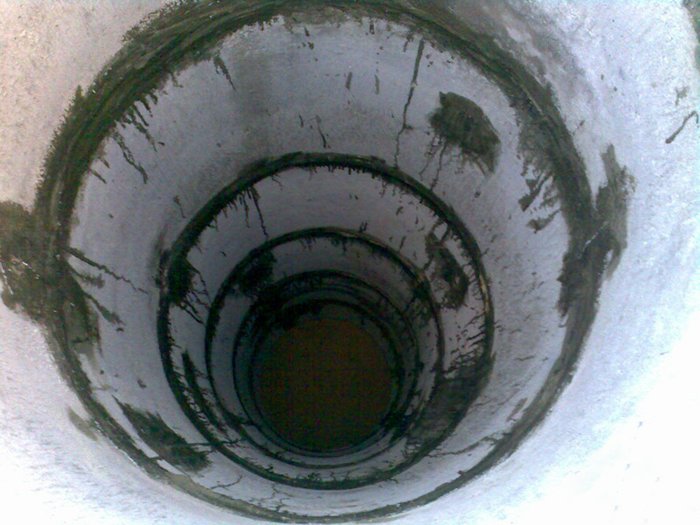
To do this, it is not enough to remove only dirt and dust, it will require a deeper cleaning of the surface from efflorescence, sagging and laitance. All these phenomena disrupt the penetration of waterproofing components into the concrete structure.
It is necessary to scrape off the loose layer until the surface becomes hard. If reinforcement appears during the grinding process, it must be treated with an anti-corrosion agent.
Joint waterproofing
At this stage, it is necessary to moisten the joints before applying primers. In order for the work to be done efficiently, one coat of primer will be enough. After its complete absorption, a coating mixture is applied to the strobes (with a layer of at least 3 cm). The mastic should set, and the process (primer-mastic) is repeated up to two times.
If the waterproofing of wells is carried out at the stage of construction of the structure, the joints between the rings can be glued with a special tape. In places where communications are supplied, they are treated with sealants that are designed for this type of work. To check the correct sealing of the joints, you need to pay attention to the tightness of the fit of the reinforced concrete rings inside and out, between which voids, gaps or cracks should not be visible.
The last stage of sealing drinking wells will be enhanced processing of the entire surface of the structure from the inside.
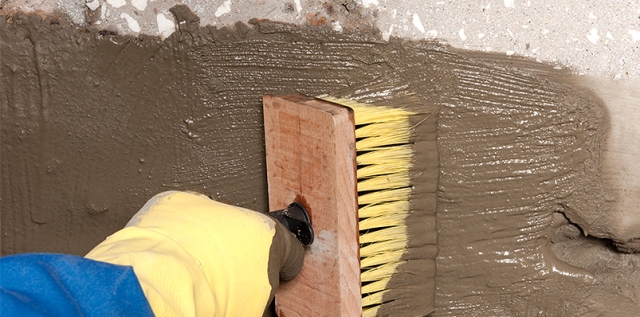
As in the case of seams, concrete walls are primed and a polymer mixture is applied to them in several layers (usually 2 - 3), taking breaks between each subsequent application to dry the material.
External walls are waterproofed using polyurea or roll materials. This procedure can be carried out after the final drying of all seams.
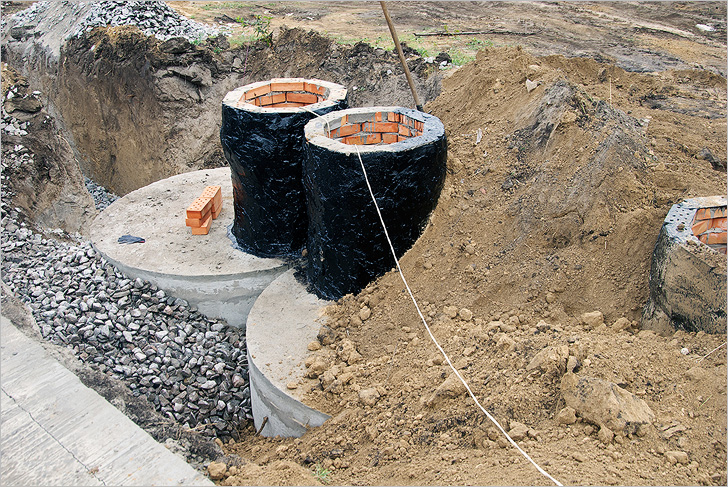
Some types of such insulation are fixed on the walls of the well by fusing, but the main part is glued to a special composition.
It is equally important to take care of the sealing of the sewer septic tank, in which wastewater accumulates and is cleaned. Here it is necessary to take into account the fact that in this case we are dealing with sewage that can seep through concrete walls into the soil and pollute groundwater. In wet soils, the joints between the rings are damaged faster, so the danger of an emergency increases every year more and more.
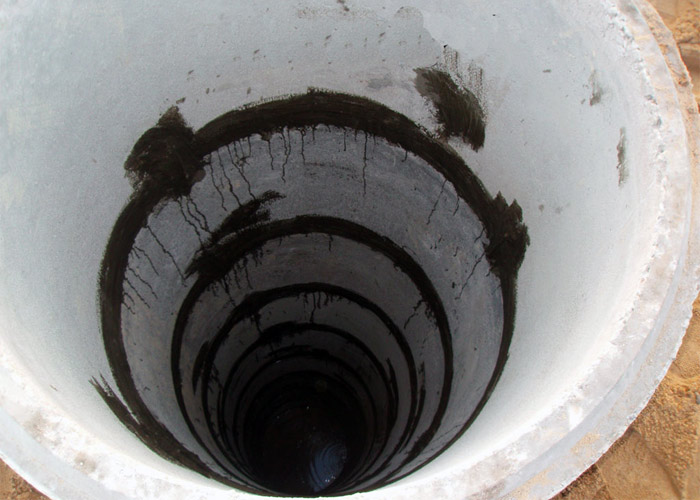
Waterproofing of sewer wells is carried out using a technology similar to that applied to drinking structures. All work on the processing of sanitary wells can be done by hand. However, the quality of waterproofing materials must be monitored very carefully.
